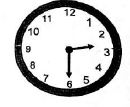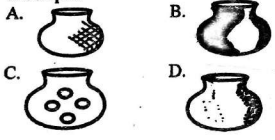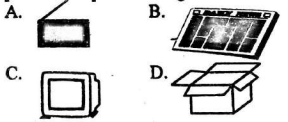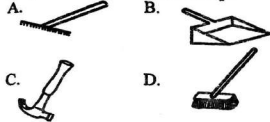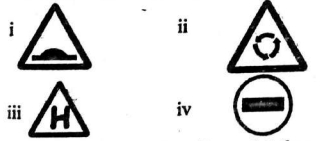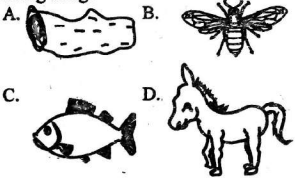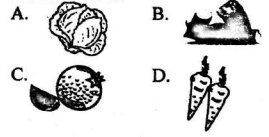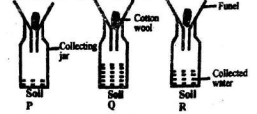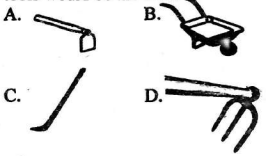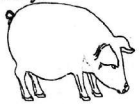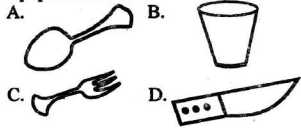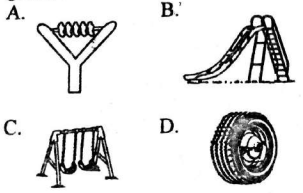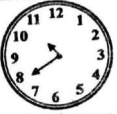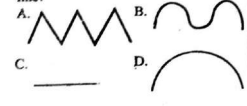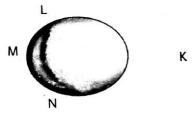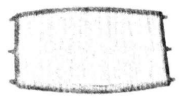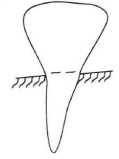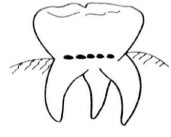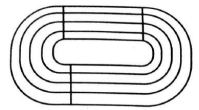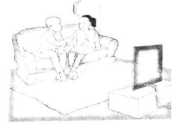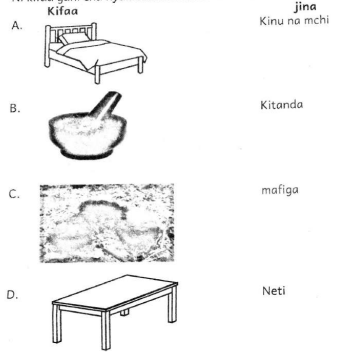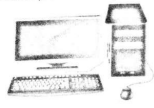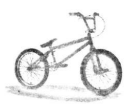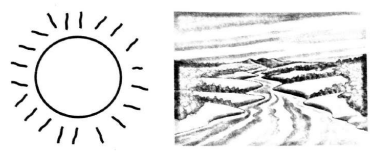Stella
Mathematics Questions and Answers - Grade 4 Opener Exams Term 1 2023 Set 4
QUESTIONS;
- June is the month of the year.
- 5th
- 6th
- 8th
- 10th
- Which is the 10th month of the year?
A. May
B. July
C. October
D. August - Which is the last month of the year?
- December
- January
- March
- September
Fill in the missing numbers
- 95, 90, 85, 80,
- 79
- 75
- 65
- 60
- 460, 470, 490, 500
- 450
- 475
- 479
- 480
- Write 46 in words.
- Thirty six
- Four six
- Forty six
- Forty
- Juma had 344 bottles of soda in his shop. He bought another 60 bottles. How many bottles of soda does he have altogether?
- 401
- 304
- 403
- 404
- There were 216 chairs in a party. Mr Ali added 209 chairs. How many chairs were in the party?
- 426
- 425
- 325
- 326
- Mr Sifuna had 149 cows. He sold 35 of them. How many cows was he left with?
- 114
- 116
- 214
- 310
- A shopkeeper had 58 packets of sweets. He sold 13 packets. How many packets was he left with?
- 40
- 35
- 45
- 71
- Ann sells 4 bananas in a day. How many bananas does she sell in 5 days?
- 9
- 1
- 19
- 20
- Multiply: 3x6 =
- 15
- 13
- 18
- 28
- 8 √32
- 3
- 4
- 40
- 6
- Share 35 mangoes equally among 7 boys.
- 28
- 32
- 6
- 5
- Which clockface shows half past six?
- Mutiso has 3kg of potatoes and 6kg of beans. How many kg does he have altogether?
- 9kg
- 10kg
- 15kg
- 10kg
- Hamisi had 18kg of maize. He gave out 9kg to his friend. How many kg was he left with?
- 9kg
- 27kg
- 10kg
- 11kg
- A shopkeeper had 53 litres of milk. He sold 37 litres. How many litres of milk was he left with?
- 15 litres
- 16 litres
- 17 litres
- 80 litres
- What time is it?
- Quarter past 4
- Quarter past 3
- Quarter past 3
- Quarter past six
- Peter has two sh 100 notes. How many sh 200 notes will He get?
- One
- Two
- Three
- Four
- Ouma had sh 818. He bought a bag at sh 220. How much was he left with
- sh 599
- sh 399
- sh 598
- sh 498
- 4 7 9
-2 1 6
- 363
- 264
- 364
- 263
- 3 9 4
+ 2 4
- 518
- 418
- 419
- 519
- Which one of the following is a good?
- teacher
- tailor
- carpenter
- bread
- Which one of the following is a need?
- book
- pen
- house
- car
- What is,1/2 of 8?
- 4
- 16
- 6
- 5
- Which one of the following shows a 1/4
- Multiply 9 and 9
- 81
- 71
- 80
- 79
- Complete the pattern
- How many triangles can you see?
- 3
- 4
- 5
- 2
shade 1/4
× =12
- 3×4
- 3×12
- 12×3
- 4×3
- Maina eats 2 bananas in a day. How many bananas does he eat in 7 days?
- 14
- 12
- 13
- 9
- 4√32
- 9
- 7
- 8
- 5
- Which shaded fraction is bigger?
- How many 1 litre jugs can be used to fill the 5 litre jerrycan?
- 4
- 5
- 1
- 3
- hrs min
3 15
+4 20
- 6hrs 35min
- 7hrs 35min
- 5hrs 35min
- 8hrs 35min
- Peter had 120kg or rice. He sold 80kg. How many kg were left?
- 40kg
- 200kg
- 30kg
- 50kg
- 48+6=
- 12
- 4
- 8
- 5
- 32 eggs were shared equally among 8 visitors. How many eggs did each visitor get?
- 3
- 4
- 2
- 6
MARKING SCHEME
- B
- C
- A
- B
- D
- C
- D
- B
- A
- C
- D
- C
- B
- D
- C
- A
- A
- B
- D
- A
- C
- D
- B
- D
- C
- A
- B
- A
- C
- B
- D
- D
- A
- C
- D
- B
- D
- A
- C
- B
Creative Arts & Social Studies Questions and Answers - Grade 4 End Term 1 Exams 2023 Set 1
ART & CRAFT.
- Which of the following shows smudge technique?
- Kimani wants to practise weaving on a dowel loom. Which of the following materials can be use?
- Wires
- Plasticine
- Thread
- Cotton wool
- A table mat can be made using
- modelling technique.
- folding technique.
- basketry technique.
- weaving technique.
- Study the diagram below
The type of drawing shown above is called- still life drawing.
- imagination drawing.
- observation drawing.
- nutritive drawing.
- Which one of the following is a source of pictures for photomontage?
- The diagram below show a play item.
The part labelled Y is made of- papers.
- threads.
- wires.
- stones.
- All the following can be used when making a doll. Which one cannot?
- Clothes
- Cotton wool
- Rubber bands
- Cement
- A Grade 4 Art and Craft teacher asked some pupils to name the best weather to play with a propeller.
Tim - rainy
Kim - windy
Sam - calm
Val - cloudy
Who among the pupils was correct?- Kim
- Tim
- Sam
- Val
- Marangi drew a picture and wanted to paint it red. Which of the following items would he use?
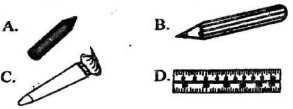
- Embedding and incising technique can both be used to decorate
- wood items.
- clay items.
- paper items.
- fabric.
MUSIC
- Which of the following shows a string instrument?
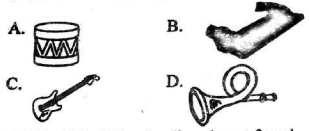
- Which of the following lines is not found in the first verse of the Kenya National Anthem?
- Justice be our shield and defender.
- O God of all creation.
- Plenty be found within our borders.
- Let one and all arise.
- Which of the following types of songs is sung for babies to sleep?
- Patriotic songs
- Lullabies
- Sacred songs
- Gospel songs
- Which of the following animals produces a "moo" sound?
- Sheep
- Cow
- Cat
- Dog
- When performing singing games, we must always observe
- gender.
- weather.
- time.
- safety.
- Which one of the following is a percussion instrument?
- Flute
- Trumpet
- Drum
- Guitar
- Which of the following body parts cannot be used for dancing?
- Shoulders
- Legs
- Head
- Teeth
- Lavalava wanted to record his string instrument as he played it. Which of the following devices was necessary for the task?
- Magazine
- Newspaper
- Smartphone
- Television
- Which one of the following can be used to improvise a drum?
- Sand
- Used jerrycan
- Clay
- Cotton wool
- String instruments can be played by
- blowing
- hitting
- plucking
- shaking
SOCIAL STUDIES.
- Which of the following is an example of built environments?
- Museum
- Valley
- Plateau
- Forest
- Which one of the following is a cardinal point of the compass?
- South east
- North
- North west
- South west
- The diagram below represents compass directions.
*
The direction labelled P is called- north west
- south west
- south east
- north east
- The diagram below shows a source of heat.
The source of heat drawn above uses- firewood.
- charcoal.
- gas.
- petrol.
- At home, water can be used for
- keeping fish.
- travelling.
- cooling machine.
- cooking.
- All the following items can be used to keep a market place clean except
- Animals in distress are those that are
- dead.
- sick.
- eating.
- active.
- Which of the following types of wastes cannot burn in a rubbish pit?
- Paper wastes
- Dry leaves
- Glass materials
- Old rags
- Which of the following can be used to collect rain water?
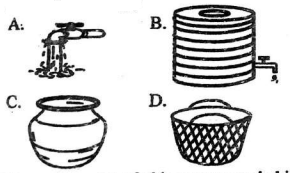
- Mauzo has a lot of old newspapers in his store. What should he do with them?
- Sell them
- Burn them
- Keep them
- Read them
- The following are road signs.
Which of the above signs shows that there is a hospital around?- iv
- ii
- i
- iii
- Wastes collected in the school compound should be disposed in the
- dustpan.
- rubbish pit.
- bucket.
- dust bin.
- Animals can be relieved from distress by
- hanging name tags on their ears.
- exposing them to some work.
- isolating the male ones from female ones.
- treating them in a veterinary.
- Below is a way of protecting plants.
The plant protection method shown above is called- fencing
- pruning
- weeding
- thinning.
- Which of the following is a harmful cultural practice?
- Child naming celebration.
- Circumcision.
- Female genital mutilation.
- Singing harvest songs.
CHRISTIAN RELIGIOUS EDUCATION
- Who among the following is not a member of the extended family?
- Uncle
- Cousin
- Aunt
- Brother
- All of us were made to look like our
- parents.
- teachers.
- God.
- friends.
- Which one is not the work of the Holy Spirit in a Christian's life? The Holy Spirit helps us to
- be unkind.
- do good things.
- live in peace.
- love others.
- All the following are fruit of the Holym Spirit except
- love.
- joy.
- faith.
- peace.
- On the day of Pentecost,
- believers spoke in different languages.
- a voice was heard from above.
- darkness covered the land.
- the disciples were drunk in the morning.
- While reciting the Lord's prayer,
- we should be walking around.
- there must be darkness.
- we should have our Bibles at hand.
- we must adopt a posture of prayer.
- Lala and her brother were given homework to do. Instead of doing the work, Lela's brother started playing. As Christians how best should Lela correct her brother?
- Do his work for him.
- Tell him to finish the work then play later
- Funish him.
- Call the teacher and tell him what he is doing.
- Which Christian value did Ananias and Sapphira leck?
- Trust
- Obedience
- Responsibility
- Honesty
- In the story of the unforgiving servant, which punishment did the king give the unforgiving servant? He
- threw him in a den of lions.
- threw him in a furnace of fire.
- jailed him.
- sent him out of the empire.
- We should always ____________________________ God for wonderfully and fearfully creating us.
- hate
- thank
- accuse
- blame
- The miracle of Jesus walking on water encourages Christians to have strong
- feet.
- courage.
- faith.
- obedience.
- How many loaves of bread had the boy with two fish?
- 7
- 10
- 3
- 5
- The good Samaritan helped a man who was beaten up by
- poachers.
- killers.
- robbers.
- jews.
- Whose daughter did Jesus raise from the dead
- Jairus'
- Lazarus'
- Jethro's
- Pharaoh's
- The home town of Jesus was
- Bethlehem.
- Golgotha.
- Capernaum.
- Nazareth.
ISLAMIC RELIGIOUS EDUCATION
- The word Qul as used in Surah Ikhlas means
- read.
- go.
- pray.
- say.
- Which of the following surah means the men?
- An-Nas
- Al-Fatiha
- Al-Ikhlas
- Al-Falaq
- Allah has no parent or children is a lesson from surah
- Al-Lahab
- Al-Ikhlas
- Al-Kauthar
- Al-Maun
- Who among the following was Allah's prophet?
- Raqib
- Jibril
- Mikail
- Issa
- Which one of the following can be sung in Islamic ceremonies?
- Lullabies
- Taarab
- Qaswida
- Hymns
- Which of the following God-given bounties do we use for sight?
- Eyes
- Heart
- Ears
- Hands
- Allah gave Nabii Daud a holy book called
- Quran
- Zabur
- Injil
- Taurat
- Prophet Muhammad (SAW) was known by all to be
- humble.
- unkind.
- rude.
- jealous.
- Qadar means Allah's
- ability
- power
- wisdom
- people
- ______________________ is an Islamic festival.
- Mashujaa
- Easter
- Eid
- Christmass
- Muslims fast in the holy month of
- Dhulhijja.
- Shabaan.
- Rabiulawwal.
- Ramadhan.
- Taking good care of family property shows
- fear.
- responsibility.
- carelessness.
- kindness.
- Alhamdulillah is said when a fellow Muslim
- sneezes.
- dies.
- falls.
- coughs.
- The last swalah of the day is called
- Isha.
- Fajr.
- Asr.
- Maghrib.
- According to prophet's hadith, we use our right feet when entering a
- bus.
- masjid.
- classroom.
- building.
MARKING SCHEME
- B
- C
- D
- A
- B
- A
- D
- A
- C
- B
- C
- D
- B
- B
- D
- C
- D
- C
- B
- C
- A
- D
- D
- C
- D
- C
- B
- C
- B
- A
- D
- B
- D
- A
- C
CRE
- D
- C
- A
- C
- A
- D
- B
- D
- C
- B
- C
- D
- C
- A
- D
IRE
- D
- A
- B
- D
- C
- A
- D
- A
- B
- C
- D
- B
- A
- A
- B
Integrated Science Questions and Answers - Grade 4 End Term 1 Exams 2023 Set 1
SCIENCE AND TECHNOLOGY.
- Which one of the following is a non- living thing?
- Which one of the following is not a characteristic of all plants? All plants
- grow.
- are green.
- die.
- reproduce.
- When handling thorny plants, we should wear _______________________________ in our hands.
- goggles
- socks
- gumboots
- gloves
- Eating too little or too much food is
- unhealthy.
- good.
- healthy.
- necessary.
- Our classroom floors must always be dry to avoid
- slides.
- shocks
- fainting.
- burns.
- When a person has fainted, he or she should be taken to a
- swimming pool.
- shade.
- veterinarian.
- chemist.
- The following are different foods found in our locality. Which one of them shows cassava?
- Below is a food storage facility found at home
Which of the following foods can best be preserved using the facility above?- Milk
- Maize
- Vegetables
- Cooked food
- All the following are energy giving foods. Which one is not?
- Yams
- Carrots
- Rice
- Porridge
- When eating our food, we should always
- eat without talking.
- lick our fingers.
- speak as we eat.
- appreciate by singing.
- Which one of the following can be a reason for bed wetting?
- Taking too little water before bed time.
- Drinking a lot of water when we wake up.
- Noise from the surrounding environments
- Dreaming.
- A teacher drew the parasite below on the board.
She later asked Mambo to mention the name of the parasite. If Mambo was correct, what did he say?- Flea\
- Tapeworm.
- Louse
- Jigger
- All the following are internal parasites. Which one is external?
- Tapeworm
- Liverfluke
- Jiggers
- Threadworm
- Which one of the following is a bedding material?
- Carpet
- Doormat
- Curtain
- Pillow
- What is the use of ash when cleaning a latrine?
- Ash makes the latrine floor dry.
- It prevents smell.
- It makes the latrine bright.
- Ash kills germs on the latrine roofs.
AGRICULTURE.
Use the diagram below to answer the following questions.
- Soil Q was likely to be
- smooth.
- loam.
- clay.
- sand.
- Loam soil was likely to be
- P and R
- Q
- R
- P
- The best soil for building is labelled
- P
- R
- Q and R
- Q
- Maundu wanted to cut long grass in his farm. Which one of the following farm tools would be the best?.
- All the following farm animals give us milk. Which one does not?
- Goat
- Camel
- Sheep
- Cow
- Farmers harvest their farm produce when the season is
- dark.
- dry
- wet.
- rainy.
- The animal drawn below is reared in our county.
The animal shown above is called a- pig.
- sheep.
- dog.
- cow.
- Which one of the lists below has fruits only?
- Maize, beans, pawpaws.
- Avocado, mangoes, oranges.
- Kales, spinach, cabbages.
- Yams, cassava, potatoes.
- Farmers need to ____________________ their crops when there is no rain.
- uproot
- plant
- grow
- irrigate
- Which of the following animals is reared at home?
- Zebra
- Gazelle.
- Rabbit
- Squirrel.
HOMESCIENCE
- Which one of the following is a safe play item?
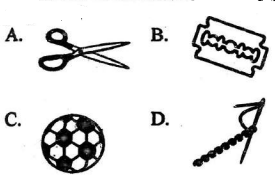
- Maua wants to make a ball. Which of the following materials should Maua use?
- Stones
- Old rags
- Wires
- Wood
- Which of the following shows how we can take care of our play items?
- Leave them in the field after playing with them.
- Always play with them indoors to avoid losing them.
- Keep them safe after playing with them.
- Always leave them in school.
- We can promote good health by
- avoiding playing together.
- avoiding sharing personal items.
- avoiding sharing our balls with others.
- playing alone to avoid diseases.
- Which of the following items is found in the kitchen?
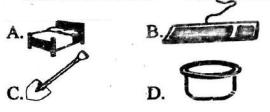
- Which one of the following foods must not necessarily be cooked before eating?
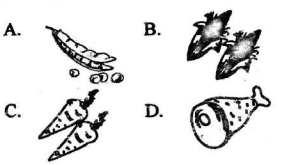
- Which of the following kitchen equipment shows a fork?
- We should _________________________ our fruits before eating them.
- wash
- boil
- fry
- cook
- We should not share our
- toys.
- books.
- socks.
- classes.
- Which one do we use to clean our teeth?
- Toothpick
- Sponge
- Handkerchief
- Toothbrush
PHYSICAL HEALTH EDUCATION.
- Study the diagram below.
The diagram above shows- an athletic track.
- a swimming pool.
- a football pitch.
- a basketball court.
- Athletes end their races at the
- start point.
- centre.
- finish line.
- middle of the track.
- Below is a player practising a game in athletics.
The player above is likely to be practising- standing start.
- standing long jup
- warm up skills.
- short races.
- All the following animals live in water except a
- whale.
- crocodile.
- shark.
- tortoise.
- Mwajuma was practising star fish float. Probably, Mwajuma was in their
- house.
- classroom.
- swimming pool.
- football field.
- Which of the following parts of the body is not used in V-balance?
- Shoulders
- Hands
- Head
- Legs
- Which of the following play items cari be used for climbing and sliding games?
- Which of the following body parts is mainly used when skipping?
- Hand
- Shoulders
- Fingers
- Legs
- Which of the following items can be used in a swimming pool?
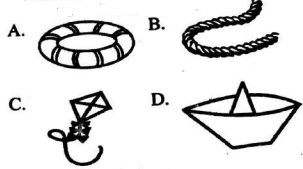
- In HELP in relation to swimming, L stands for
- Listening.
- Level.
- Loose.
- Lessening.
- Sabina and Joy want to play a skipping game. Which of the play items below do they need?
- A bean bag
- A rope
- A strong polythene paper.
- Old rags.
- When playing different games, all the rules must be
- obeyed.
- created
- broken.
- disobeyed.
- Arm action and leg action have one factor in common in that they are both
- field events.
- swimming skills.
- dangerous skills.
- played in the field.
- All the following are dynamic balances in gymnastics except
- body balance.
- beam balance.
- crab stand balance.
- wheelbarrow balance.
- Horizontal float in swimming can also be called
- treading in water.
- vertical float.
- gliding in water.
- back float.
MARKING SCHEME
- A
- B
- D
- A
- A
- B
- B
- A
- B
- A
- D
- B
- C
- D
- B
- D
- C
- D
- C
- C
- B
- A
- B
- D
- C
- C
- B
- C
- B
- D
- C
- C
- A
- C
- D
- A
- C
- B
- D
- C
- A
- B
- D
- A
- D
- B
- A
- B
- A
- D
Shughuli za Kiswahili Questions and Answers - Grade 4 End Term 1 Exams 2023 Set 1
Soma mazungumzo yafuatayo kisha ujibu maswall -
(Mwalimu na wanafunzi wamo darasani wakijadiliana kuhusu wanyama na umuhimu wao.)
Mwalimu: Haya wanafunzi wangu wakati ule mwingine niliwaeleza kuwa kunavyo vikundi viwili vya wanyama.
Tobi: Naam, na kumbuka jana baba yangu aliniambia kuwa wanyama wengine huishi na wanadamu nyumbani huku wengine wakiishi misituni. Mwalimu: Hakika. Wanaoishi na wanadamu nyumbani huitwa wanyamahowa ilhali wanaoishi misituni ndio wanyamapori. Wengi wa wanyamapori huhifadhiwa katika mbuga za wanyama.
Huna: Nawapenda wanyama hawa kwa kuwa wao hutusaidia. Ng'ombe, mbuzi na ngamia hutupa nyama na maziwa, nguruwe hutupa nyama nao kondoo hutupa nyama na manyoya.
Tim: Naam, tena baadhi ya wanyamahowa hufugwa kwa ajili ya huduma. Mbwa ni mlinzi mizuri wa nyumbani, punda hutusaidia kukokota mikokoteni yenye mizigo nao paka huwakamata na kuwala panya waharibifu.
Mwalimu: Kwa upande mwingine, wanyamapori huwavutia watalii ambao huitembelea nchi yetu. Wanapowaona, wao hulipa pesa za kigeni ambazo hutumika kuijenga nchi. Kwa hivyo, wanyama wote wana umuhimu mkubwa kwetu.
- Kulingana na mazungumzo uliyoyasoma, wanyama huweza kugawanywa katika
- waishio na wasioishi.
- wanyamapori na wanyamahowa.
- vikundi vinne.
- wale wa asili na wale wa kigeni.
- Wanyama wasioishi na wanadamu nyumbani
- huitwa wanyamahowa.
- butusaidia katika shughuli za nyumbani.
- huishi mbugani.
- hutupa vyakula murua.
- Watalii wanapoitembelea nchi yetu, wao
- hulipa pesa za kigeni.
- hulipwa pesa za kigeni.
- hurudi na wanyama wetu katika nchi
- huja na wanyama kutoka katika nchi zao.
- Ni kundi gani la wanyama hutupa vyakula vya aina moja?
- Paka, mbwa na punda.
- Kondoo, nguruwe na mbuzi.
- Ngamia, mbuzi na paka.
- Mbuzi, ngamia na ng'ombe.
- Kulingana na mwalimu, umuhimu mkuu wa wanyamapori ni kwamba wao
- huwavutia watalii wa humu nchini.
- huiwezesha nchi yetu kupata pesa za kigeni.
- huwa walinzi wazuri wa nyumbani.
- hutusaidia kukokota mikokoteni.
Soma kifungu kifuatacho kisha ujibu maswali 6 hadi 8.
Hapo zamani za kale, wanyama wote waliishi msituni. Walifanya kazi zao pamoja ili wapate chakula cha kuwatosha. Chakula kilichopatikana kiligawanywa kwa usawa miongoni mwao. Kila siku, walirauka kwenda shambani. Mbwa, Fisi na Simba walienda kuwawinda ndege ambao baadaye waliwaleta na kuwagawia wenzao.
Paka alikuwa mvivu asiyependa kufanya kazi. Hakutaka kuchafuka. Alishinda siku nzima akiisafisha miguu yake kisha baadaye kwenda kula. Kuona hivi, wanyama wale wengine wakakasirika sana. Waliamua kuficha chakula chote. Hata hivyo, Paka alinyemelea na kuingia katika ghala polepole akala chakula chote. Wanyama waliamua kumkamata Paka huyo mvivu. Walimwambia Mbwa awe mlinzi wa ghala. Paka alipokuja, mbwa alibweka kwa sauti. Wanyama wote waliamka na kumfukuza Paka. Paka aliamua kwenda kwa binadamu kuishi. Aliahidi kuwashika panya. Wakawa marafiki.
- Wanyama hawa walipata chakula chao kwa
- kufanya kazi pamoja kwa bidii.
- kuwaibia wanyama wengine.
- kuwawinda wanyama wadogo.
- kuishi pamoja kwa amani.
- Wanyama wale wengine walimkasirikia Paka kwa sababu
- alikila chakula chote ghalani.
- hakufanya kazi kama wao.
- aliiba chakula kutoka ghalani.
- aliwasumbua wenzake.
- Je, Mbwa alifanya nini Paka alipoenda katika ghala?
- Alibweka kwa sauti.
- Aliwaita wanyama wale wengine.
- Aliwakamata panya.
- Alimfukuza paka.
- Paka alimwahidi nini mwanadamu?
- Kuwa rafiki yake mkubwa.
- Kuwakamata ndege.
- Kufanya kazi shambani.
- Kuwashika panya.
Soma kifungu kifuatacho kisha ujibu maswali 10 hadi 12.
Ilikuwa siku ya Jumamosi karibu saa tano hivi asubuhi. Pendo, kaka yake Ali na mama yao walianza safari kuelekea katika soko la kijijini mwao, soko la Malimengi. Soko hilo lilikuwa karibu na uwanja wa ndege. Ilikuwa ndiyo Juniamosi ya kwanza tangu shule zilipofungwa. Siku hiyo, walipaswa kununua bidhaa kama vile sukari, mchele, mafuta na nguo za kuwapelekea nyanya na babu yao walioishi huko Konoike.
Walipofika sokoni, waliwapata watu wengi sana. Kwa sababu ulikuwa nisimu wa sherehe za Idi, mavazi yalikuwa ya bei ghali sana. Iliwabidi wanunue mchele, sukari na mafuta pekee. Nguo wangenunua kwingine.
- Karibu saa tano hivi asubuhi,
- safari ya kuenda kijijini ilianza.
- safari ya kwenda sokoni ilianza.
- kina Pendo walifika nyumbani.
- shule zilifungwa.
- Kina Pendo walipaswa kununua
- nguo, sukari na mchele.
- mafuta, sukari na mchele.
- mafuta, sukari, nguo na mchele.
- nguo, sukari na mafuta.
- Safari hii iliandaliwa katika msimu wa sherehe gani?
- Krismasi
- Pasaka
- Jumamosi
- Idi
Soma kifungu kifuatacho kisha ujibu maswali 13 hadi 15.
Asubuhi hiyo, niliamka nikiwa nimechelewa. Nilijua kuwa rafiki zangu, Rama na Veli walikuwa wakiningoja katika stani. Siku zote, tulishindania kiti cha mbele katika basi letu la shule. Mara nyingi nilikuwa wa kwanza katika stani. Kwa hivyo mara nyingi nilikiwahi kiti hicho. Tuliahidiana kuwa yeyote ambaye alikiwahi kiti hicho cha mbele angegawiwa vipande vya mikate na wenzake waliochelewa wakati wa mapumziko. Upesi, niliunawa uso wangu na kuvalia sare zangu nikatandika kitanda changu na kukisafisha chumba changu. Baadaye, nilielekea sebuleni kupata kiamshakinywa. Niliteremsha chai kwa sambusa upesi na kuondoka.
- Ni nini ambacho mwandishi alijua kuwahusu Rama na Veli? Kuwa
- walikuwa katika basi la shule.
- walikuwa wakimngoja.
- wangekuwa wa kwanza kukiwahi kiti cha mbele.
- tayari walikuwa wamefika shuleni.
- Ni nini ambacho mwandishi na wenzake walikishindania?
- Kufika shuleni mapema.
- Kula vipande vya mikate.
- Kuabiri basi la shule.
- Kukiwahi kiti cha mbele.
- Kabla ya msemaji kupata kiamshakinywa, alifanya haya yote ila
- kukiwahi kiti cha mbele.
- kukisafisha chumba chake.
- kukitandika kitanda chake.
- kuunawa uso wake.
Soma kifungu kifuatacho. Chagua Jibu lifaalo zaldi kati ya yale uliyopewa.
Maji ni uhai. Bila maji, ___16___ binadamu hata mmoja ambaye anaweza ___17___. Binadamu ___18___ huyategemea maji moja kwa moja. Maji hayo hutumika katika shughuli mbalimbali kama vile kunywa, kupikia, kuoshea vyombo na shughuli nyingine za nyumbani. ___19___ inapokosekana, maji hutumika kunyunyizia ___20___. Maji yatumiwayo kunyunyizia huweza kupatikana mitoni, mabwawani na maziwani.
| A | B | C | D | |
| 16. | hakuna | kunaye | kuna | wapo |
| 17. | kuisha | kufa | kuishi | kufariki |
| 18. | sote | wote | zote | yote |
| 19. | Mvua | Maji | Mimea | Mawingu |
| 20. | shamba | wafu | mvua |
Katika swali la 21-30, jibu swali kulingana na maagizo uliyopewa.
- Ni shughuli gani hapa haipatikani nyumbani?
- Kupalilia mimea.
- Kusafisha nyumba.
- Kufua nguo.
- Kuosha vyombo.
- Katika sentensi Mbwa mdogo amebeba mfupa katika meno yake, nomino ni zipi?
- Mdogo, mfupa, yake
- Mbwa, mfupa, meno
- Mdogo, amebeba, katika
- Yake, katika, mfupa
- Tisini na sita ni
- 69
- 66
- 99
- 96
- Ni gani hapa ni maelezo sahihi kuhusu matumizi ya kikomo katika sentensi?
- Hutumiwa mwanzoni mwa sentensi.
- Huweza kuwa katikati ya sentensi.
- Hutumiwa mwishoni mwa sentensi.
- Haiwezi kutumiwa sentensi ikianza kwa herufi kubwa.
- Ni yupi hapa ameambatanishwa na kazi yake kwa usahihi?
- Dereva - hutengeneza magari yaliyoharibika.
- Mpishi - hukuza mimea na kuwafuga wanyama
- Mwalimu - huwalea watoto majumbani mwao.
- Seremala - hutengeneza vifaa kwa kutumia mbao.
- Je, ni mwezi gani huwa baina ya Julai na Septemba?
- Agosti
- Oktoba
- Juni
- Mei
- Nywele huota ___________________ kichwa.
- ndani ya
- katikati ya
- juu ya
- chini ya
- Tumia kihusishi bora zaidi kukamilisha sentensi hii.
Mti mrefu uko _______________________ darasa letu.- chini ya
- nje ya
- ndani ya
- juu ya
2
- Ili kuwaangamiza wadudu waharibifu shambani, wakulima
- hupalilia.
- huvuna.
- hunyunyiza maji.
- hupiga dawa.
- Ni sentensi ipi iliyo katika nafsi ya tatu?
- Mwanaisha ataimba jioni.
- Mimi niliimba jioni.
- Nyinyi msiimbe jioni.
- Sisi hatutaki kuimba jioni.
MARKING SCHEME
- B
- C
- A
- D
- B
- A
- D
- A
- D
- B
- C
- D
- B
- D
- A
- A
- C
- B
- A
- D
- A
- B
- D
- C
- D
- A
- C
- B
- D
- A
English Language Activities Questions and Answers - Grade 4 End Term 1 Exams 2023 Set 1
Read the following conversation and then answer questions 1 to 5.
Father: Mueni, did I tell you the other day that animals can be grouped into two major groups?
Mueni: Yes you did, daddy. But you did not tell us the animals in each of the two groups.
Maingi: I remember in our yesterday's Social Studies lesson, Madam Machoine told us that some animals live with human beings at home and others live in the forests.
Father: Absolutely. The ones living with humans at home are called domestic animals while the other group is made up of wild animals. Most wild animals live in game parks and game reserves.
Mueni: I like domestic animals because they help us. Cows give us milk and meat, same to goats and camels, pigs gives us pork and sheep give us wool and meat called mutton,
Maingi: Yes, and again, some domestic animals are kept for services. A dog is a good guard. It alerts the family whenever there is danger. Donkeys help us carry luggage on carts. Cats help us control destructive rats and mice.
Father: On the other hand, wild animals attract tourists who come to visit our country. As they see them, we earn foreign exchange which our country uses for various development projects. All animals, therefore, are important to us.
- According to this conversation, animals can be divided into
- living and non living.
- wild and domestic.
- four.
- local and foreign.
- The animals that do not live with people at home
- are found in parks and reserves.
- can help farmers to pull the carts.
- are useful for their food products.
- are said to be domestic.
- Which of the domestic animals below give human beings similar products?
- Sheep, pigs and goats.
- Camels, goats and cats.
- Goats, camels and cows.
- Cats, dogs and donkeys.
- According to father, the main importance of wild animals is that they
- attract tourists.
- provide food products.
- guard our homested.
- enable our country get foreign exchange.
- As the tourists come to our country and see the animals, they
- get paid some money.
- pay foreign exchange.
- go with them away.
- they bring theirs as well.
Read the passage and then answer questions 6 to 9.
A long time ago, all animals lived together in the forest. They worked together to get food for all of them. The food was then shared among themselves. Daily, they woke up very early to go to the farm. Dog, Hyena and Lion went to hunt birds. They brought the birds they got and shared them with other animals.
Cat was very lazy and did not want to work. He spent the whole day cleaning his feet and did not want to get dirty. Then he came home to eat.
Other animals were very angry at him. They decided to hide the food and did not give him anything. However, the Cat entered the store quietly and ate all the food. The animals decided to catch the lazy Cat. They left Dog at the door of the store. When the Cat came, the Dog barked very loudly. The other animals woke up. They chased the Cat away. The Cat went to ask for help from man. He promised to help him catch rats. They became great friends.
- The animals got food by
- stealing from others.
- hunting small animals.
- living together.
- working together.
- The other animals were angry at the Cat because he
- ate all the food.
- stole some food.
- did not work.
- disturbed other animals.
- What did the Dog do when the Cat came to the store? He
- barked loudly.
- called other animals.
- caught the cat.
- chased the cat away.
- What did the Cat promise Man? To A
- be his great friend.
- catch the birds.
- work in the farm.
- catch the rats.
Read the passage and then answer questions 10 to 12.
Industrialisation means making things for people to buy. Those things are made or manufactured in large buildings called factories. Such factories are flour factory, cloth and the soap factory. Here are other names you should remember: raw materials, products and labourers. Raw materials are used for making other things. Clothes are products of the raw materials called cotton.
The word labourer means the people who work in those factories. A lot of money is needed to start a factory. If you build a factory, you must be sure that the raw materials can be obtained easily. You must also be sure that a lot of people would want to buy your products.
- According to this passage, products are made in
- factories.
- godowns.
- stores.
- farms.
- What is the use of a raw material according to the writer?
- Paying workers.
- Exchanging for money.
- Making things.
- Building factories.
- The writer says that when you want to start a factory, you must have
- enough products.
- some few customers.
- many friends.
- enough money.
Read the passage and then answer questions 13 to 15.
I got up late that morning. I knew my friends, Jon and Ken were waiting for me at the bus stop. We always competed for the front seat in our school bus. Many days I was the first on stage. Whoever got the seat was to get a piece of cake during tea break from any of us who came late. I washed my face quickly and wore my school uniform. I made my bed, cleaned my room and then went to the sitting room. I started eating my breakfast very fast.
- What did the writer know about John and Ken? That they
- were in their school bus.
- were waiting for her.
- would be the first to board the bus.
- were already in school.
- What did the writer and her friends compete for?
- Reaching school early.
- Eating pieces of cake.
- Boarding the school bus.
- Getting the front seat.
- Before the writer sat down for her breakfast, she did not
- get the front seat.
- clean her room.
- make her bed.
- wash her face.
Read the passage below. It contains blank spaces numbered 16 to 20. For each blank space, select the best alternative from the choices given.
It was a bright Tuesday morning during the planting ___16___. The children had closed school a week earlier. The ___17___ had already prepared their farms and it was now time to ___18___. James and his younger sister___19___ grazing the cattle a short distance from their compound. James____20____a gourd of porridge while his sister carried food.
| A | B | C | D | |
| 16. | weather | season | lesson | times |
| 17. | children | learners | pupils | villagers |
| 18. | plant | rain | harvest | irrigate |
| 19. | is | are | were | was |
| 20. | hard | had | heard | herd |
For questions 21 to 23. use the correct word to fill in the blank spaces.
- We spoke loudly __________________ they did not hear us.
- then
- because
- but
- and
- My brother, ___________________I have new toys.
- an
- at
- but
- and
- Mother came early. __________________ I did not see her.
- because
- but
- and
- as
In questions 24 to 27, choose the best alternative to complete the sentences.
- My bicycle wheel is ______________________ in shape.
- small
- circular
- black
- big
- Most ripe bananas are yellow in
- shape
- taste
- size
- colour
- My younger sister's shoes are ______________________ in size.
- small
- good
- black
- oval
- The _____________________ of an egg is oval.
- colour
- taste
- size
- shape
For questions 28 to 30, choose the correct indefinite pronoun to complete the sentences.
- _____________________ is coming, I can hear footsteps
- Anybody
- Nobody
- Everybody
- Somebody
- I cannot see my ruler, ____________________must have picked it.
- nobody
- somebody
- anybody
- everybody.
- _____________________ is allowed to come to school early.
- Nobody
- Somebody
- Anybody
- No one
MARKING SCHEME
- B
- A
- C
- D
- B
- D
- C
- A
- D
- A
- C
- D
- B
- D
- A
- B
- D
- A
- C
- B
- C
- D
- B
- B
- D
- A
- D
- D
- B
- C
Mathematics Questions and Answers - Grade 4 End Term 1 Exams 2023 Set 1
QUESTIONS
- A farmer in Malimali county had 917 goats in his farm. What is this number in word:?
- Nine hundred and seventy.
- Nine hundred and seventeen.
- Nine hundred and seven.
- Nine thousand and seventeen.
- In Bongochonjo market, there were eight hundred and sixteen traders. How many traders were there in symbols?
- 8 116
- 860
- 80 016
- 816
- In a certain game reserve, there were 28 546 animals. What is the total value of the underlined digit?
- Hundreds
- Thousands
- 8000
- 500
- What is the place value of digit 9 in the number 49 236?
- Hundreds
- Tens
- Thousands
- Ones
- A county store had 679 bags of wheat. What is this number rounded off to the nearest ten?
- 670
- 600
- 680
- 690
- Which one of the following numbers in not a factor of 24?
- 5
- 3
- 8
- 6
- What is the next number in the pattern below?
2, 4, 5, 7, 8, 10, 11, _______________- 12
- 13
- 14
- 15
- Some learners were asked to bring beads for an Art and Craft lesson:
Kadogo - 7 beads
Mbulu - 6 beads
Samido - 10 beads
How many beads did they bring altogether?- 23
- 32
- 22
- 24
- A meeting was attended by 106 men, 99 women and 57 children. How many adults attended the meeting altogether?
- 262
- 205
- 252
- 305
- Which of the following represents 1/8 of a whole?
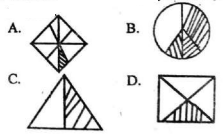
- A cup can hold 2 litres of milk. How many litres can 3 such cups hold?
- 12 litres
- 5 litres
- 1 litre
- 6 litres
- There were 18 litres of paint in a bucket. A painter used 9 litres to paint a museum wall. How much paint was left?
- 27 litres
- 2 litres
- 10 litres
- 9 litres
- Three children weigh 62 kg. If two of them weigh 51 kg, what is the mass of the third child?
- 113 kg
- 29 kg
- 11 kg
- 18 kg
- Abdi harvested 115 kg of carrots from his farm. He sold 15 kg to Salma and 20 kg to Omari. What is the mass of the remaining carrots?
- 70 kg
- 80 kg
- 35 kg
- 145 kg
- One morning a meeting started at the time shown on the digital clock below.
If the meeting was to end at 11.00, how many minutes did it take?- 50
- 30
- 40
- 20
- Work out:
Hours Minutes
13 18
+ 4 29
- 16 hours 57 minutes
- 17 hours 57 minutes
- 16 hours 47 minutes
- 17 hours 47 minutes
- The distance from the shop to Ashura's home is 45 m. One day Ashura was sent to buy salt in the shop. If she walked from her home to the shop, what distance did she cover before going back home?
- 90 m
- 45 m
- 180
- 23 m
- Take away 48 m from 93 m.
- 141 m
- 45 m
- 114 m
- 55 m
- What is the time according to the clockface below?
- Twenty minutes to eleven o'clock
- Eight minutes to eleven o'clock
- Eleven minutes to eight o'clock
- Forty minutes to twelve o'clock
- Which one of the following cannot be used to tell time?
- Birds
- Animals
- Calendar
- Charts
- In a shop there were 10 bottles. The shopkeeper put 2 bottles in each crate. If he used r crates, what is the value of r?
- 10
- 20
- 5
- 2
- As Chomba was washing dishes, he accidentally broke m plates and was left with 2. If there were 3 plates before, how many plates were broken?
- 5
- 1
- 3
- 4
- Which of the following shapes is an oval?
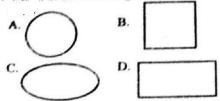
- A tourist was facing north. Which direction will she face if she moves ahead along a straight line?
- East
- North
- West
- South
- Which of the following, shows a curved line?
- What is the next shape in the pattern shown below
The table below shows a farmer's harvest Use it to answer questions 27 to 30.
| Produce | Sacks |
| Maize | 25 |
| Beans | 14 |
| Groundnuts | 13 |
| Wheat | 11 |
| Sorghum | 9 |
- How many sacks of beans and wheat were harvested altogether?
- 24
- 25
- 26
- 23
- Which of the following gave the farmer a total of 27 sacks?
- Groundnuts and beans
- Wheat and sorghum
- Groundnuts and maize
- Maize and beans
- Which farm produce produced the most number of sacks?
- Sorghum
- Maize
- Beans
- Wheat
- Which farm produce gave the farmer nine sacks only?
- Beans
- Groundnuts
- Maize
- Sorghum
MARKING SCHEME
- B
- D
- D
- C
- C
- A
- B
- A
- B
- A
- D
- D
- C
- B
- A
- D
- B
- B
- A
- D
- C
- B
- C
- B
- D
- A
- B
- A
- B
- D
Creative Arts and Social Studies Questions and Answers - Grade 4 Mid Term 1 Exams 2023 Set 1
ART AND CRAFT
- Which of the following is wet media used while smudging?
- Crayon
- Pencil graphite
- Ink
- Charcoal
- Why is overlapping important while arranging still life?
- Overlapping helps to create depth in drawings making the drawings look 3-Dimensional
- Overlapping helps the artist to create texture in drawing
- Overlapping helps the artist to create tone
- Overlapping helps to create balance in the drawing
- The following are the steps that a grade 4 followed while making a crayon etched drawing
- Scratching the ink using a sharp tool
- Applying wax crayon on a surface
- Let the ink dry
- Applying ink on the wax surface
Arrange the steps from the first to the last- i,iv,iii,ii
- ii,i,iv,iii
- ii,iii,iv,i
- ii,iv,iii,i
- Dan was drawing some fruits while looking at them and drawing. What type of drawing is this?
- Drawing from memory
- Drawing from observation
- Drawing from imagination
- Drawing still life
- Look at the picture below keenly. Where is the light coming from?
- L
- K
- N
- M
- A grade 4 learner was painting a pot using a brown colour. He wanted to create a light tone on some parts of the pot. How could he create a light tone while painting?
- By adding black paint to the brown colour
- By using more brown colour
- By adding white paint to the brown colour
- By using less brown colour
- Making pictures using lines and shades is known as
- modelling
- drawing
- painting
- smearing
- The following are materials needed when creating value gradation strip. Which one is not?
- Clay
- Pencil
- Drawing paper
- Ruler
- What is tone?
- Tone is the feeling of a surface
- Tone is the gradual change from dark to light
- Tone is the lightness or darkness of a surface
- Tone is applying colour on a surface
- The following are materials and tools used in crayon etching. Which one is not?
- Toothpick
- Paint brush
- Black Indian Ink
- Pencil graphite
MUSIC
- Which type of song would a mother sing to make a baby sleep?
- Sacred song
- Lullaby
- Story song
- Folk song
- We describe the ______________________ of a song when we use words like loud or soft
- pitch
- height
- tempo
- dynamic
- Which verse of the Kenya nationa! anthem ends with the word shukrani?
- Four
- Two
- One
- Three
- In which group of musical instruments do we classify the instrument below?
- Wooden
- Percussion
- Stringed
- Wind
- Items like chairs and baskets that are used in a singing game are called
- gifts
- props
- toys
- costumes
- We can tell the difference between two notes on a piano because they have different _____________________
- pitch
- rhythm
- style
- fun
- "Tushangilie Kenya taifa letu tukufu "is a common Kenyan __________________ song.
- action
- sacred
- patriotic
- story song
- Moving our bodies in rhythm when responding to music is called ______________________
- choir
- dancing
- sound
- rythm
- The melody of a song can simply be called the ______________________ of the song.
- words
- tune
- dynamics
- tempo
- The following are costumes that we can wear when performing folk songs. Which one is not?
- Sisal skirts
- Necklaces
- Jingles
- Guitar
SOCIAL STUDIES (15 marks)
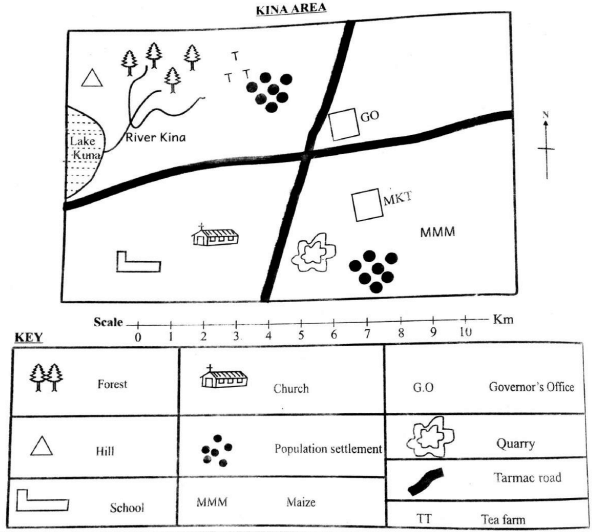
Study the map of Kina area and answer questions 21-25.
- On which side of the map is the forest found?
- North West
- North East
- South West
- South East
- Which cash crop is grown in Kina area?
- Maize
- Coffee
- Tea
- Sisal
- The elected head of Kina area is likely to be a
- Governor
- Senator
- Chief
- Assistant chief
- The presence of the church in the area shows that people in Kina area are
- Christians
- Muslims
- Pagans
- Hindus
- The main means of transport in Kina area is
- railway
- road
- air
- water
- Grade four learners made a tour to a nearby slum area. They found many people living together. This type of population distribution is said to be
- sparsely populated
- densely populated
- scattered
- linear
- Which one of the following is not a physical feature?
- Mountains
- Rivers
- Valleys
- Winds
- Traditional items preserved in museums are called
- artefacts
- products
- models
- monuments
- During the rainy season, farmers engage in
- ploughing
- planting
- winnowing
- harvesting
- The four main points of a compass are known as
- cardinal points
- relief feature
- paths
- regions
- Interdependence is important in the following ways except
- people live in unity and harmony
- people are able to get what they want
- people learn from each other
- people steal from each other
- Grade 4 Social Studies teacher asked learners to identify historic built environment. Who gave a wrong answer?
- Risper - Cultural centres
- John - Huts
- Peter - Museums
- Ann Monuments
- Kenya is divided into how many counties?
- 10
- 47
- 12
- 18
- Law and order in our county is maintained by
- teachers
- the governor
- police
- judges
- A good leader should have all the following qualities except
- hardworking
- honesty
- arrogance
- humility
C.R.E (15 marks)
- Creation stories are recorded in the book of
- Genesis
- Exodus
- Numbers
- Acts of Apostles
- Who among the following is known as the "Father of faith"?
- Noah
- David
- Abraham
- Moses
- "You created every part of me; You put me together in my mother's womb. "This verse is found in the book of
- Proverbs
- Psalms
- Genesis
- Exodus
- Why are human beings special in God's creation? They
- were created in God's image
- were created from the soil
- were created last
- were created male and female
- Grade four CRE teacher asked learners to identify ways of coping with emotions. Which one is not?
- Praying and relying on God
- Playing with friends
- Speaking to someone we trust about our feelings
- Staying alone to think deeper
- Who among the following made a wrong choice?
- Annania and Saphira
- Naomi
- Noah
- Abraham
- Who among the following raped his half sister Tamar?
- Amnon
- Jonadab
- Solomon
- Absolom
- According to 1 Corithians 6:19, our bodies are the temples of the
- blood
- flesh
- Holy spirit
- Lord
- Three of the following are attributes of God. Which one is not?
- Creator
- Loving
- Protector
- Sinner
- Which one of the following books of the Bible is not found in the New Testament?
- Luke
- Matthew
- Ruth
- Jude
- The tax collector who climbed a sycamore tree to see Jesus was called
- Zacchaeus
- Simon
- Levi
- John
- The name Jesus means
- Emmanuel
- Saviour
- Teacher
- Light
- While playing in the field, a grade four learner hit his friend with a stick. As a Christian, what should the pupil who hit the other one do?
- Run away
- Apologise and say sorry
- Report to the teacher
- Keep quiet
- Who among the following was prevented by an angel from going to curse the Israelites?
- Balak
- Balaam
- Jonnah
- Darius
- From the story where Samson killed a lion, we learn that we should
- kill wild animals
- ask God to enable us beat people
- trust in God
- stay away from danger
I.R.E (15 marks)
- Allah is one and he has no family. This is a teaching of surah
- Ikhlas
- Fatiha
- Falaq
- Maun
- Who among the following persons was cursed in surah Al-Masad?
- Abraha
- Abu Talib
- Abu Lahab
- Hamza
- Which two surahs are referred to as Muadhatain?
- Naas and Ikhlas
- Naas and Falaq
- Falaq and Ikhlas
- Fatiha and Naas
- Maryam a grade four learner lacks patience in all that she does. Which surah would you advise her to read?
- Humaza
- Ikhlas
- Maun
- Asr
- Who was the first man to be created by Allah (S.W.T)?
- Yaqub
- Adam
- Luqman
- Issa
- Muslims should respect the religion of other people. This teaching is found in surah
- Kafirun
- Kauthar
- Maun
- Masad
- According to the hadith of the prophet (SAW) we should always say the truth even though it is
- good
- bitter
- strong
- sweet
- Which one of the following is not a manner of eating in Islam?
- Saying Bismillahi before eating
- Saying Alhamdulillahi after eating
- Washing hands after eating
- Using a spoon
- Which of the following attributes of Allah means the creator?
- Al-Malik
- Al-Qudus
- Al-Azeez
- Al-Khaaliq
- Who among the following prophets of Allah was given the Injil?
- Daud
- Ibrahim
- Iss
- Musa
- How many children did prophet Muhammad (SAW) have?
- Seven
- Six
- Four
- Three
- How many rakaat are performed in the fardh prayer done after sunset?
- Four
- Three
- Two
- One
- While fasting in the month of Ramadhan, Jamal a grade 4 learner did the following things. Which of them nullified his fast?
- Talking
- Laughing
- Eating intentionally
- Sleeping
- Muslims greet one another by saying
- Asalaam aleykum
- Hello
- Good morning
- Shikamoo
- Which one of the following terms signals the end of swalat?
- Jalsa
- Tashahud
- It'dal
- Taslim
MARKING SCHEME
ART
- C
- A
- D
- B
- B
- C
- B
- A
- C
- D
MUSIC
- B
- D
- D
- B
- B
- A
- C
- B
- B
- D
SOCIAL
- A
- C
- A
- A
- B
- B
- D
- A
- B
- A
- D
- B
- B
- C
- C
C.R.E
- A
- C
- B
- A
- D
- A
- A
- C
- D
- C
- A
- B
- B
- B
- C
I.R.E
- A
- C
- B
- D
- B
- A
- B
- D
- D
- C
- A
- B
- C
- A
- D
Integrated Science Questions and Answers - Grade 4 Mid Term 1 Exams 2023 Set 1
SCIENCE AND TECHNOLOGY (15marks)
- A part from growth, three of the following are other characteristics of animals. Which one is not?
- They die
- They make their own food
- They reproduce
- They feed
- When handling plants we are required to use some equipment. Which one of the equipment below protects our hands from harmful plants?
- Goggles
- Overcoat
- Gloves
- Forceps
- Grade four learners were asked to list vertebrates that they know. They gave the following animals. Which among them is wrong?
- Locust
- Shark
- Tilapia
- Frog
- During a dry season, pupils from Igoji primary school were able to note that most of the plants around their school had dried up. What does that show?
- Plants feed
- Plants remove waste
- Plants dry
- Plants die
- The diagram below shows a human tooth. What is the function of the tooth below?
- Cuts and bites food
- Pierces and tears food
- Bites and tears food
- Grinds and chews food
Use the diagram below to answer questions 6 and 7
- What is the name of the part labelled (ii)
- Wind pipe
- Trachea
- Large intestine
- Oesophagus
- In which part of the digestive system is the undigested food stored temporarily before removal?
- v
- ii
- iv
- iii
- The following are ways of polluting environment except
- burning charcoal
- vehicles fumes
- planting more trees
- burning wastes
- Grade four learners were learning about effects of air pollution. Which of the following learners did not give the correct answer?
- Luke - Air pollution causes breathing problems
- Amani - Air pollution causes eye irritation
- Kimani - Air pollution causes poor visibility
- Ruth - Air pollution causes proper growth of plants
- Four learners were asked to mention safety precautions to take when working in a water polluted environment. Who gave the wrong precaution?
- Wearing gumboots
- Uprooting dead rotten plants with bare hands
- Putting on water proof coat
- Wearing gloves
- Grade 3 teacher drew the type of tooth shown below and asked learners to name it. Who among them gave the correct name?
- Andrew - Premolar
- Jemima - Incisor
- Maureen - Canine
- Oscar - Molar
- Grade 4 learners were learning about ways of keeping our teeth healthy. Among the following ways, which one is not correct?
- Visiting a dentist regularly
- Eating food like sweets and chocolates
- Chewing hard food like carrots
- Brushing teeth after every meal.
- Dennis and his classmates were playing a game at the school field. After a few minutes, they heard the lunch bell ringing. They stopped playing and went to the dining hall. They could smell the sweet aroma of the food being served. Which parts of the body did Dennis use to hear and smell respectively?
- Ears and nose
- Nose and ears
- Eyes and Nose
- Tongue and ears
- Grade 4 learners were asked to state how they can help to reduce air pollution. They gave the following answers. Which one was not a correct answer?
- Sprinkling ash in pit latrines
- Sprinkling water on dusty grounds.
- Proper disposal of dirty water
- Disposing waste properly
- Grade 4 learners were asked by their Science teacher to name examples of living things. Among the following things listed, which one is a living thing?
- Trees
- Chair
- Phone
- Rocks
AGRICULTURE (10 marks)
- The following are different types of soils. Which type of soil is good for farming?
- Sandy soil
- Clay soil
- Loam soil
- Sandy clay soil
- The following materials can be used to make compost manure. Which one is not?
- Chicken dropping
- Cow dung
- Dry leaves
- Polythene bags
- A grade four boy was transplanting seedlings. Which tool was he using to remove seedlings from the soil?
- Trowel
- Jembe
- Panga
- Spade
- Mary planted carrots in a container garden. Three of the following are activities she is supposed to carry out to care for the carrots. Which one was not necessary?
- Mulching
- Cutting
- Watering
- Weeding
- A grade four teacher asked grade four learners to state importance of soil to plants and animals. Four pupils gave the following responses.
John - Soil provides plants with mineral salts and nutrients
Asha - Soil stores air used by plants and animals
Jane - Soil stores water used by plants and animals
Mike - Soil is used for construction
Who gave a wrong answer?- Asha
- Jane
- John
- Mike
- Atieno visited her grand parents during rainy season. She noticed that her grand parents had planted rice on their farm. Which type of soil was the farm likely to have?
- Loam soil
- Clay soil
- Silt
- Sandy soil
- Grade four learners in Upendo school wanted to make a compost manure. Among the following tools that they brought to school, which one was not useful in making the compost manure?
- Jembe
- Spade
- Garden fork
- Dustpan
- When discusing about physical properties of soil, learners listed different properties. Among the following properties, which makes clay to hold water for long?
- Has large particles
- Good for growing crops
- Has small particles
- Sticky when wet
- Below are reasons why farmers are encouraged to use compost manure on their farms. Which one is not? Compost manures
- contain nutrients
- improve the soil structure
- do not pollute the soil
- are expensive to make
- Jane planted a mango seedling in a container and kept it behind their house. Which one of the following would be the best method of irrigating the seedling?
- Flood irrigation
- Drip irrigation
- Sprinkler irrigation
- Furrow irrigation
HOMESCIENCE (10 marks)
- Which one does not cause diarrhoea?
- Eating contaminated food
- Eating fruits before washing them
- Washing vegetables before cooking
- Poor sanitation
- We eat different types of food at home and school. Why do we eat fruits and vegetables?
- To grow
- To get energy
- To be strong
- To prevent diseases
- The following are different types of shoes. Which one is suitable during rainy muddy season?
- Gumboots
- Rubber shoes
- Saddle shoes
- Canvas shoes
- The following are things a child needs to grow healthy. Which one is not?
- Playing
- Eating a balanced diet
- Maintaining hygiene
- Drinking alcohol
- Which quality should you look for when choosing a play item?
- It should be sharp
- It should be heavy
- It should be clean and safe
- It should be expensive
- The following are locally available materials used to make a play item: dry leaves, dry grass, old pieces of cloth, string and waste paper. The materials are suitable for making a
- ball
- rope
- shakers
- hola hoops
- Which type of common illnesses has the following signs in a person?
- watery mucus
- sneezing and fever
- Earache
- Cold
- Malaria
- Diarrhoea
- The following are heathy measures that prevent common illnesses except
- wash hands before you eat
- wash hands after visiting the toilet
- wash fruits before you eat
- eating cold foods
- The following are common illnesses. Which one causes passage of loose or watery stool?
- Sore throat
- Coughs
- Stomachache
- Vomiting
- The following are causes of common illnesses. Which one can cause a severe cough?
- Drinking contaminated water
- Eating a lot of food
- Playing near the road
- Inhaling a lot of smoke
PHYSICAL AND HEALTH EDUCATION (15 marks)
- Which one of the following materials is suitable for making a skipping rope?
- Bottle tops
- Old wires
- Sisal fibre
- Thread
- The diagram below represents a place where certain sports take place. Name it.
- Athletics track
- Softball pitch
- Handball court
- Football pitch
- The following are benefits of teamwork in games and sports except
- it enhances cooperation among players
- leads to failure of the team
- enhances unity among themselves
- players comfort each other whenever they lose a match.
- The following materials can be used to improvise a soccer ball. Which one is should not be used?
- Leaves
- Old clothing
- Papers
- Soil
- Players are advised to have commitment to a team during games and sports so that
- they are dedicated during competition
- they are demoralised easily
- they compete unfairly
- they win the match
- The following are reasons why we should practise rope skipping in our daily lives except
- it helps reduce body weight
- it brings fun and enjoyment among children
- it makes one tired and sick
- enables us to be physically fit
- A grade four Physical and Health Education teacher advised learners to choose the correct length of skipping ropes depending on their body sizes. Why is it necessary to consider the length of the rope?
- To have fun during the activity
- To prevent accidents
- To reduce tiredness
- Enables one to skip the rope for a long time.
- The following are events that take place in an athletics track except
- 100m race
- long jump
- 200m race
- 400m race
- Which one of the following is a safety measure to observe while performing bounce pass?
- Play in a flat field free from foreign objects
- Play on a slippery ground
- Does not require warm up before performing
- Do not wear sports attire
- Which material cannot be used for hand juggling?
- Sharp stones
- Scarves
- Handkerchiefs
- Balls
- The following equipment are used in the game of rounders except
- rounders ball
- rounders bat
- helmet
- net
- When performing headstand, one should observe the following except
- ensure the field is flat
- avoid slippery ground
- perform on a sloping ground to enjoy more
- collect all sharp objects from the field
- Which one of the following is a safety precaution to observe when batting in the game of rounders?
- Move closer to your friend
- Share the bat when batting
- Remove the helmet to see clearly
- Keep distance
- The following are benefits of cool down activities. Which one is not?
- Helps to cool our bodies
- Helps to regain lost energy
- Makes us feel sleepy
- Makes us feel relaxed
- The exercise done after a game is called
- warm-up activity
- cool down activity
- jogging
- racing
MARKING SCHEME
SCIENCE
- B
- C
- A
- D
- A
- D
- A
- C
- D
- B
- D
- B
- A
- C
- A
AGRI
- C
- D
- A
- B
- D
- B
- D
- C
- D
- B
H/SCI
- C
- D
- A
- D
- C
- A
- B
- D
- C
- D
PHE
- C
- A
- B
- D
- A
- C
- C
- B
- A
- A
- D
- C
- D
- C
- B
Kiswahili Questions and Answers - Grade 4 Mid Term 1 Exams 2023 Set 1
Kusikiliza na kuzungumza
Soma mazungumzo yafuatayo kisha ujibu maswali 1-5
Chichi: (akibisha mlango) Hodi!
Jabari: (kwa furaha) karibu! Ni nani tafadhali?
Chichi: Rafiki yako Chichi.
Jabari: Karibu sana sahibu. Nimekungojea sana ufike ili tushinde pamoja leo.
Chichi: Asante kwa makaribisho. Sebule yenu inafurahisha sana.
Jabari: Namshukuru Mungu kwa kuwasaidia wazazi wangu kununua meza ya kisasa, makochi, televisheni, mazulia na mapazia mazuri.
Chichi: (Akiangalia juu) Balbu zenu za stima zinapendeza sana.
Jabari: (akiwasha umeme) Tazama, zina rangi tofautitofauti.
Chichi: (akiikagua meza) Matendegu haya ya meza yametengenezwa kwa ufundi sana.
Jabari: Seremala aliyeyatengeneza ni hodari. Pia alitengeneza fremu ya mlango wetu. Angalia vile inavutia.
Chichi: Kusema kweli nyumba yenu inapendeza. Kabla sijarudi kwetu leo nitakusaidia kuipiga deki.
Jabari: Asante Chichi. Usafi ni kitu muhimu.
(wote wanaketi na kupanga shughuli za siku hiyo)
- Ni jambo gani la heshima ambalo Chichi alifanya alipofika kwa rafiki yake?
- Kubisha hodi
- Kufurahi
- Kukaribishwa
- Kungojewa
- Kulingana na mazungumzo haya neno rafiki ni sawa na:
- Chichi
- Jabari
- Sahibu
- Karibu
- Sebule ya akina Jabari ina vitu hivi vyote isipokuwa?
- Makochi
- Balbu
- Meza
- Picha
- Gani kati ya vitu hivi huwa na matendeguu?
- Zulia
- Pazia
- Meza
- Balbu
- Ni shughuli gani ambayo Jabari na Chichi watafanya ili kutunza usafi?
- Kupiga deki
- Kuketi
- Kupanga shughuli za siku
- Kula pamoja
Soma hadithi ifuatayo kisha ujibu maswali 6-9
Chui na punda walikuwa marafiki wa chanda na pete. Walikuwa wakiishi msituni. Wakati mwingine walikuwa wakitofautiana kuhusu mambo fulani.
Siku moja Punda alimwambia Chui kuwa nyasi ni za rangi ya samawati. Chui alimpinga na kusema kuwa nyasi ni za rangi ya kijani. Walizozana sana kuhusu rangi ya nyasi mpaka
wakakosana.
Ili kupata suluhisho walienda kwa Simba ambaye alikuwa mfalme wa wanyama. Punda alikimbia mbele ya Chui na kumwambia Simba, "Nyasi ni za rangi ya kijani, kweli ama si kweli?" Simba akasema ni kweli. Chui naye akaja na kusema, "Nyasi ni za rangi ya kijani." Simba akamuuliza, "Ni nani hajui hivyo?"
Chui aliposikia hivyo alifurahi sana na kumwomba Simba amwadhibu Punda. Simba alimwadhibu Chui licha ya kuwa alisema ukweli. Aliadhibiwa kwa sababu ya kuzozana na punda ambaye alichukuliwa kuwa mnyama mjinga kuliko Chui.
- Punda na Chui walitofautiana kuhusu nini?
- Mfalme na wanyama
- Rangi ya nyasi
- Msituni
- Chakula
- Kulingana na kifungu mfalme wa wanyama alikuwa nani?
- Simba
- Chui
- Punda
- Nyasi
- Ni wanyama wangapi waliotajwa katika kifungu hiki?
- Mmoja
- Wawili
- Wanne
- Watatu
- Kulingana na kifungu hiki tunajifunza nini?
- Hatufai kuzozana na Punda kwani tunaweza kuadhibiwa na Simba.
- Mtu akiwa mwerevu kuliko mwingine anaweza kuadhibiwa.
- Simba, Chui na Punda ni wanyama wa msituni.
- Hatufai kuzozana na watu wasioelewa mambo kwani tunaweza kuingia hatarini.
Soma hadithi ifuatayo kisha ujibu maswali 10-12
Siku moja Jawabu aliambiwa na wazazi wake aeleze kuhusu nidhamu ya mezani. Pia aliambiwa aeleze faida zake. Aliwaomba kwa heshima wamruhusu aandike kwenye karatasi.
| Tabia yenye nidhamu | Faida zake |
| Kumshukuru Mungu | Huonyesha heshima kwa Mungu |
| Kunawa mikono kabla ya kula | Kuepuka magonjwa |
| Kula kwa utaratibu | Huwezi ukatapika |
| Kula bila kuongea | Hutachafua chakula cha wengine |
| Kunawa mikono baada ya kula | Kutunza usafi wa mtu binafsi |
Wazazi wake waliposoma walifurahi sana kwa sababu mtoto wao anaelewa nidhamu mezani na umuhimu wake.
- Jawabu aliambiwa na wazazi wake aeleze kuhusu nini?
- Nidhamu
- Nidhamu mezani
- Nidhamu ya mezani na faida zake.
- Mezani
- Mtu akikosa kunawa mikono kabla ya kula atapata hasara gani?
- Atatapika
- Atachafua nguo zake
- Hatashiba
- Anaweza kunata maad
- Ni tabia gani nyingine ambayo Jawabu angeongeza kwenye orodha yake?
- Kutazama runinga ukila chakula.
- Kutumia simu wakati wa kula.
- Kula ukiwa umeketi vizuri na kutulia.
- Kula ukisoma kitabu cha hadithi.
Soma kifungu kifuataccho kisha ujibu maswali 13 - 15.
Wekeza ni mfanyabiashara hodari katika Jiji la Mtaji. Ana duka kubwa sana la mavazi. Watu wote; wazee kwa vijana, matajiri kwa maskini, wanawake kwa wanaume hununua mavazi katika duka hilo.
Mavazi hayo yamepangwa ya kiume kando na ya kike kando. Sehemu ya mavazi ya kiume ina suruali, kaptura, mashati, tai, suti, soksi, chupi na mavazi mengineyo. Upande wa mavazi ya kike kuna; marinda, blauzi, chupi, suti, sketi, sidiria, mitandio na mengineyo.
Duka hilo pia lina mavazi ya wakati wa baridi kama vile makoti na sweta. Aidha kuna mavazi ya wakati wa kazi kama vile ovaroli. Isitoshe kuna sehemu ya viatu, mishipi, kofia, soksi na sare za wanafunzi.
Wanunuzi wengi huenda katika duka hilo kwani bidhaa huuzwa kwa bei nafuu.
- Duka lililoelezewa liko katika jiji gani?
- Hodari
- Mfanyabiashara
- Wekeza
- Mtaji
- Kulingana na kifungu ni mavazi gani yameambatanishwa vizuri na wanaoyavaa?
- Blauzi-wanaume
- Shati- wanawake
- Sare- wazee
- Ovaroli-wafanyakazi
- Kwa nini wanunuzi wengi huenda katika duka la Wekeza?
- Lina bidhaa nyingi.
- Bidhaa huuzwa kwa bei nafuu.
- Duka liko jijini.
- Duka hilo lina mavazi yote.
Soma kifungu kifuatacho. Kina nafasi 16 hadi 20. Umepewa majibu manne hapo. Chagua jibu lifaalo Zaidi kati ya yale uliyopewa.
Nyumba ___16___ ni ___17___. Jikoni kuna mawe ___18___ ya kupikia yanayoitwa ___19___. Sisi huitunza nyumba yetu ___20___.
| A | B | C | D | |
| 16. | wetu | yetu | chetu | letu |
| 17. | nzuri | mzuri | zuri | mizuri |
| 18. | watatu | mitatu | tatu | matatu |
| 19. | mchi | mvungu | mafiga | makochi |
| 20. | nzuri | vizuri | mzuri | wazuri |
Kutoka swali 21-30, chagua jibu sahihi.
- Ni maamkuzi gani ambayo hayajajibiwa vizuri?
- U mzima?- ni mzima
- Alamsiki-binuru
- Makiwa- tunayo au yamepita
- U hali gani?- nawe pia
- Ni kundi gani la maneno yaliyoambatanishwa sawasawa na aina yake?
- Zuri, -baya-,refu, -fupi- vivumishi
- Soma, andika, keti, simama- nomino
- Mvungu, tumbuu, kizingiti, globu- viwakilishi
- Mimi, wewe, yeye, wao- vitenzi
- Ni sentensi gani haina kielezi?
- Nilikula wali jana.
- Mwalimu mzuri anafundisha.
- Wanafunzi wanacheza uwanjani.
- Mtoto alikula polepole.
- Ni kifaa gani cha nyumbani kimeambatanishwa sawasawa na jina lake?
- Ni kundi gani lina mpangilio mzuri wa maneno kama yanavyofuatana katika kamusi?
- Kinu, kisu,mwiko,mchi
- Zulia,tumbuu,pazia,fremu
- Kula,nawa,pakua,pika
- Salamu, salama, salimu,sala
- Badilisha sentensi hii katika umoja: vyakula vyao vimepikwa.
- Chakula chake kimepikwa.
- Vyakula vyake vimepikwa.
- Chakula chao kimepikwa.
- Chakula changu kimepikwa.
- Ni sentensi gani si kitanzandimi?
- Baba alivua papa.
- Mama alitoa doa.
- Kuku alikula gugu.
- Jana aliandika jina.
- Unapoandika insha unafaa kuzingatia haya yote isipokuwa
- Anwani
- Mpangilio mzuri wa mawazo
- Hati safi
- Michoro mizuri
- Ni sentensi gani yenye kiulizi?
- Wewe una nidhamu mezani? C
- Seremala alitengeneza mtoto wa meza.
- Wacha kula ovyoovyo!
- Alifagia, akapiga deki na kupanga nyumba.
- Tazama picha kisha ujibu swali
Chombo hiki kinaitwaje?- Tarakilishi
- Televisheni
- Redio
- Simu
INSHA
Kuandika (Alama 10)
Umepewa dakika 40 kuandika insha yako. Andika insha juu ya:
RAFIKI YANGU
______________________________________________________________________________________
______________________________________________________________________________________
______________________________________________________________________________________
______________________________________________________________________________________
______________________________________________________________________________________
______________________________________________________________________________________
______________________________________________________________________________________
______________________________________________________________________________________
______________________________________________________________________________________
______________________________________________________________________________________
______________________________________________________________________________________
______________________________________________________________________________________
______________________________________________________________________________________
______________________________________________________________________________________
______________________________________________________________________________________
______________________________________________________________________________________
______________________________________________________________________________________
______________________________________________________________________________________
______________________________________________________________________________________
______________________________________________________________________________________
______________________________________________________________________________________
MARKING SCHEME
- A
- C
- D
- C
- A
- B
- A
- D
- D
- C
- D
- C
- D
- D
- B
- B
- A
- D
- C
- B
- B
- A
- B
- C
- C
- C
- D
- D
- A
- A
English Questions and Answers - Grade 4 Mid Term 1 Exams 2023 Set 1
Read the following dialogue and answer questions 1-5.
Allan: How are you Otieno?
Otieno: I am fine thank you.
Allan: What could be wrong? You look sad.
Otieno: I left my bicycle outside the supermarket but when I came back it was
Allan: Had you locked the bicycle?
Otieno: Yes I had.
Allan: The guard at the entrance must have seen the bicycle.
Otieno: I had not thought of that. Surely a problem shared is half solved.
Allan: Let's go back there and ask the guard if he saw who took your bicycle.
Otieno: Ok, let us go.
- Why was Otieno sad?
- He had lost his bicycle
- He was lonely
- He had a problem.
- He wanted to go to the supermarket
- Allan offered to accompany Otieno to the supermarket. This shows that Allan is ______________________
- hardworking
- idle
- caring
- selfless
- The opposite of entrance as used in the passage is ________________________
- gate
- counter
- exit
- door
- Another name for supermarket is ______________________
- a shop
- a kiosk
- wholesater
- self-service store.
- Why did Otieno say "a problem shared is half solved"?
- Allan had offered a possible solution.
- They found the bicycle
- The guard at the entrance had taken the bicycle.
- Allan was a caring friend.
Read the following passage and answer questions 6-8.
Child responsibility involves him or her making decisions, being trusted and learning to take credit or blame for action done. Taking responsibility is not just about how the choices the child makes affect her, but also how his or her choices and actions affect other people. Being responsible can help your child feel important. It makes him or her feel that he or she is contributing to both the family and the community.
One of the best ways to teach your child about responsibility is to be a role model for his or her own benefits and others. Look out for friends and neighbours, volunteer in your community and be dependable. Arrive to gatherings on time, admit when they are wrong and apologize for mistakes. If your child sees adults doing these things, he or she is much more likely to do the same.
- Which of the following does not amount to responsibility?
- Making decisions
- Making mistakes
- Taking blame
- Being trustworthy
- The best way to teach a child responsibility is _____________________
- being a role model.
- taking them to school
- admitting when they are wrong.
- being dependable
- A responsible child will do all the following except
- volunteer in community work.
- admit when they are wrong.
- arrive in gathering on time.
- deny when caught in the wrong.
Read the passage below and use it to answer questions 9 to 11.
Once upon a time there lived a man by the name Mkweli. He was very wise and never lied. All the people in the land even from far away knew about him. They loved him very much. The king heard about Mkweli and sent his guards to bring him to his palace. He looked at the wise man and asked:
"Mkweli, is it true that you have never told a lie all your life?"
"Yes. It's true my king."
"And you are sure that you will never lie in your life?"
"I'm sure in that my king."
"Okay, always tell the truth, but be careful!"
Several days passed and the king called Mkweli. The king wanted to trick Mkweli into lying. The king held his horse. He ordered Mkweli, "Go to my palace and tell the queen that I have gone hunting but I will be with her for lunch. Tell her to prepare a big feast. You must have lunch with me there."
Mkweli bowed and went to the queen. When he had left, the king laughed and said, "We won't go hunting and now Mkweli will lie to the queen. Tomorrow we will laugh at him."
- The wise man was known for
- being old
- obeying the king.
- obeying the guards.
- never telling a lie.
- How many times did the king send for Mkweli?
- Once
- Twice
- Thrice
- Four times
- To whom was Mkweli sent?
- The king
- The wise man
- The guards
- The queen
Read the passage below and use it to answer questions 12 to 15.
Long time ago the sun and water were great friends. They both lived on the earth together. The sun used to visit the water, but the water never visited the sun. At last the sun asked the water why he had never gone to see him in his home. The water replied that the sun's house was not big enough for his people.
He then said, "If you wish me to visit you, you must build a very large compound; but I warn you that it will have to be a tremendous place, as my people are very many and take up a lot of room."
The sun promised to build a very big compound, and soon afterwards he returned home to his wife, the moon, who greeted him with a broad smile when he opened the door. The sun told the moon what he had promised the water, and the next day, building a huge compound in which to entertain the sun started.
- The sun and the water lived__________________________
- in the sky
- in water
- on earth
- in a forest
- Why did the water not visit the sun?
- He had many people
- The sun's house was small
- Building had not started
- The moon had refused
- The wife of the sun was the __________________________
- Moon
- Wind
- Water
- Earth
- The promise in the story was between ____________________________
- sun and moon
- moon and water
- water and sun
- sun and earth
Read the passage below keenly. It contains blank spaces numbered 16 to 20. Fill the spaces using the best alternative from the choices given.
Now the queen once travelled through the town, and she was with her little ___16___daughter. This little daughter was a ___17___. Many people thronged the town streets and Rosemary was there too. The little princess stood in her fine white dress in a window and she let ___18___ to be stared at. She had neither a train nor a golden crown, but splendid red leather shoes. They were certainly prettier than those that the town shoemaker had ever made for ___19___ the town. Nothing in the world ___20___ be compared with red shoes.
| A | B | C | D | |
| 16. | beautiful | beauty | beautifull | beatiful |
| 17. | prince | king | queen | princess |
| 18. | herself | hers | themselves | him |
| 19. | it | she | anyone | all |
| 20. | can | could | would | will |
Select the correct word from the choices to fill the gaps for questions 21, 22 and 23.
- The ____________________ that leads to the city has been re-built.
- load
- road
- path
- ways
- Forcing children to carry too heavy ______________________ is child labour.
- road
- think
- load
- homes
- The child played with her ________________________ all day.
- joy
- happy
- toys
- full
Choose the odd one out from the choices given in question 24, 25, and 26.
-
- bought
- taught
- thought
- walked
-
- jumped
- killed
- put
- boiled
-
- lead
- put
- bet
- hit
Choose the correct tense for the verb that can best fill the gaps for questions 27 to 30 .
- The policemen have _________________________ the suspect to the police station.
- took
- taken
- take
- takes
- The old man sat in the shade and, ________________________ water from the small bottle.
- drink
- drunk
- drinks
- drank
- Who can ______________________ acrosss the river?
- swim
- swimming
- swam
- swum
- Who had ______________________ this bag behind the class?
- hidden
- hide
- hiding
- hid.
COMPOSITION
WRITING
Write an interesting composition about
MY PET
______________________________________________________________________________________
______________________________________________________________________________________
______________________________________________________________________________________
______________________________________________________________________________________
______________________________________________________________________________________
______________________________________________________________________________________
______________________________________________________________________________________
______________________________________________________________________________________
______________________________________________________________________________________
______________________________________________________________________________________
______________________________________________________________________________________
______________________________________________________________________________________
______________________________________________________________________________________
______________________________________________________________________________________
______________________________________________________________________________________
______________________________________________________________________________________
______________________________________________________________________________________
______________________________________________________________________________________
______________________________________________________________________________________
______________________________________________________________________________________
______________________________________________________________________________________
MARKING SCHEME
- A
- C
- C
- D
- A
- B
- A
- D
- D
- B
- D
- C
- B
- A
- C
- A
- D
- A
- C
- B
- B
- C
- C
- D
- C
- A
- B
- D
- A
- A



